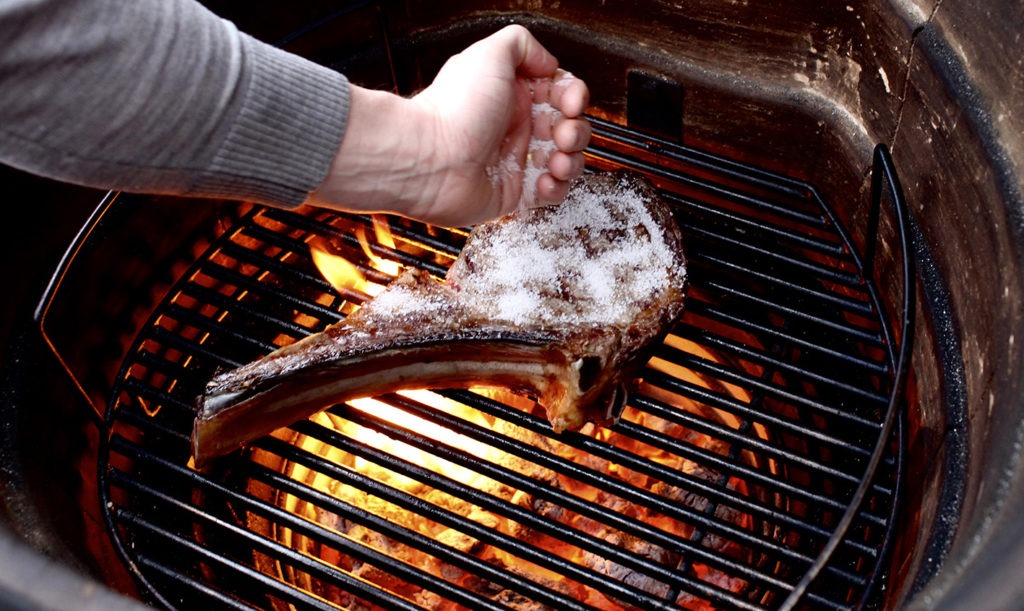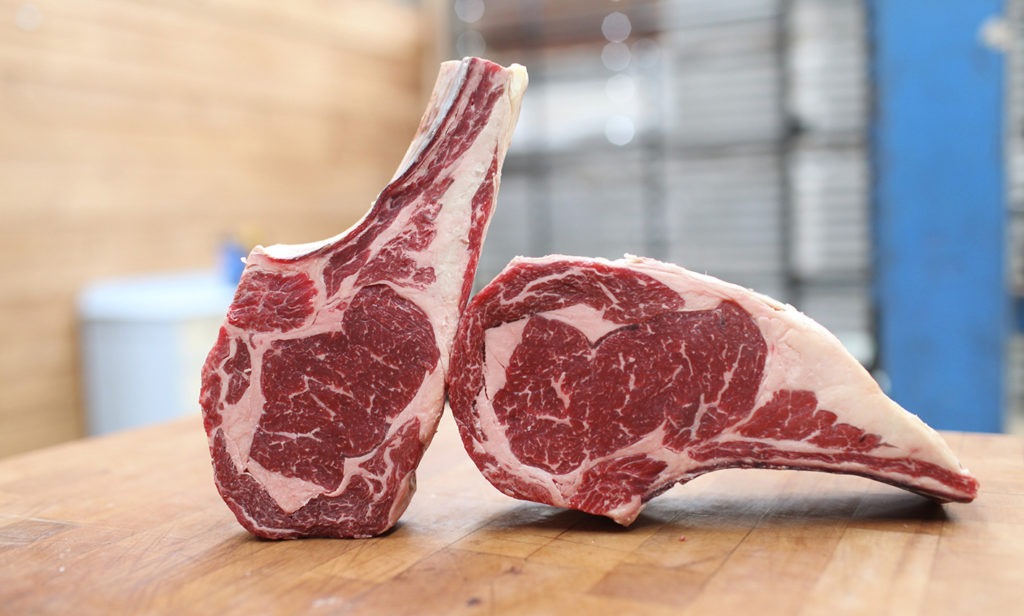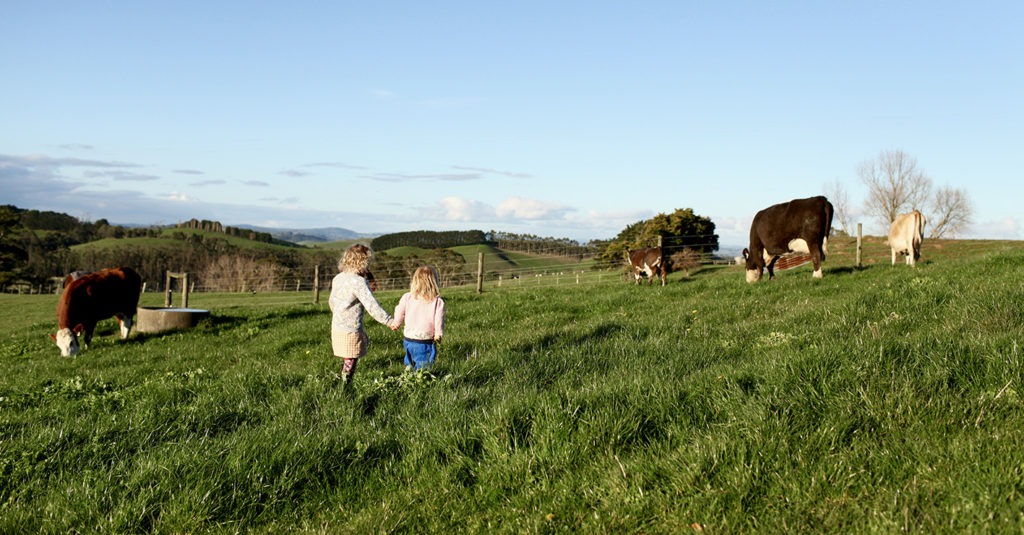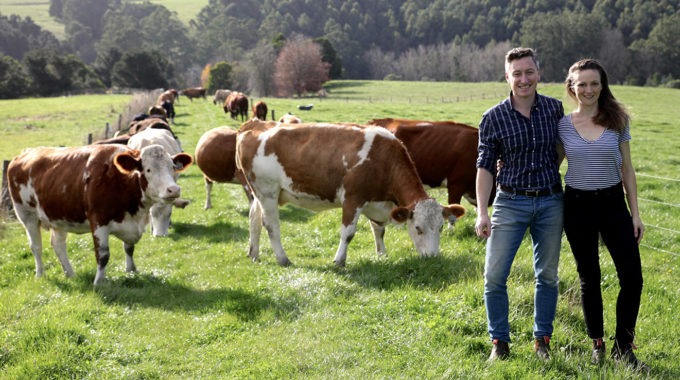Txuleta 1882: new life for old stock
Think the best beef comes from young cows? A Victorian couple is set to change that perception, bringing the Spanish tradition of eating older cattle to Aussie consumers. Txuleta (pronounced choo-letah) is beef from old cattle, and in the Basque region of Spain it has long been prized for its rich depth of flavour and increased fat marbling from the cows spending years on pasture. Gastroenterologist Josh Butt and his GP wife Jyoti Blencowe were inspired to introduce txuleta to Australian palates after they decided to purchase some farmland as a way to escape their busy city lives.
“I started looking at properties in a part of South Gippsland that my wife used to visit when she was a kid,” Butt says. “She used to visit her grandparents in that area most weekends.
“I happened to see a property for sale that turned out to be her grandparents’ old place.”
It surely had to be fate, and the couple decided to buy the property. While admitting that they were “total novices” when it came to farming, Butt and Blencowe soon set about brainstorming ideas for what they could do on their new 40-acre farm.
“We thought about what we could do that was a bit more interesting than just buying and selling cattle,” Butt says. “We came up with the idea of producing beef from older animals.”

The retiring type
Butt had come across some information about people in Europe who were fattening up old dairy cows, to try and recreate the txuleta flavour profile of beef from the traditional breeds that they use in Spain. He also found a company in America called Mindful Meats, which buys retired dairy cows and sells the meat as a more ethical way of eating beef.
“I was intrigued by the idea of these old cattle up to the age of 18, and people raving about the meat, saying they could never go back to eating a normal steak,” Butt says. “I thought, it must be pretty good if people were so passionate about it.
“Being in an area of lots of dairy farms, it was an opportunity that made sense. We started to ask around about who might be milking slightly different or more dual-purpose breeds.”
The couple found several dairy farmers to work with, and Txuleta 1882 was born. (The number 1882 is a nod to the year that the property was first farmed by Blencowe’s great grandfather.) The couple began acquiring carefully selected heritage dairy breeds aged anywhere from five to more than 10 years of age, letting them spend their retirement peacefully grazing on verdant pastures as they fatten up.

Taking a chance
While txuleta beef might be highly regarded in Europe, here in Australia it’s virtually unknown. The response the couple received when they first started asking people’s advice was that meat from old cows, especially old dairy cows, would likely be tough and not very pleasant to eat, and that they would be much better off raising young Angus cattle.
“But we thought we’d take the chance, not really knowing how the beef would turn out,” Butt says. “Then it happened that the first few tasted great.”
So great did the meat taste that Txuleta 1882 was named as a state winner in last year’s delicious. produce awards. There has also been extremely positive feedback from butchers such as Troy Wheeler at Melbourne’s speciality butchers Meatsmith, and chefs around the country have also started making enquiries.
“There is interest,” Butt says. “But at the moment the issue is our ability to supply. We’re still pretty small scale. At the moment we’re only maturing maybe one cow a month.”

From chopper to gourmet
So, what does txuleta beef taste like? Butt admits that it’s quite hard to describe.
“I would say it’s almost like having beef properly for the very first time,” he says. “You realise that the beef you’re used to eating didn’t actually have much flavour. Ours has a more concentrated, intense and mature flavour profile.”
The richer flavour comes from the fact that older animals have had time to develop and work their muscles for longer. The more a muscle works in an animal, the greater the intensity of flavour. There’s also more time for natural fat development, creating more marbled meat that has had more nutrients absorbed into it over the animal’s life.
“We wanted to produce something that tasted delicious and was a bit different,” Butt says. “But there was also the appeal to investigate more ethical, sustainable methods of meat production. We thought that it was a nice thing to be doing. Apparently, when a dairy cow has finished its milking life, it normally just gets sent off to the abattoir. It’s straight from the milking line one day, off to the abattoir the next.”
The industry calls these animals “chopper cows”. A lot of this beef is simply boned out and sent overseas for use in hamburgers or minced meat.
“We thought that, after giving so many thousands of litres of milk, these cows deserved a nice retirement – a year or so to fatten up in their old age,” Butt says. “And then be really appreciated to the fullest extent, rather than just being sold as hamburger mince.”

Going against the grain
Txuleta 1882 cows are 100 percent grass-fed. The couple also uses regenerative farming practices such as rotational grazing to improve soil. There are also plans to build a watercourse to increase biodiversity and bring back some of the area’s original vegetation.
“The Spanish method for fattening these cows often includes feeding them oats and grain,” Butt says. “What we’re doing is trying to produce an even better-tasting txuleta by using grass. It’s a longer process to finish off the cattle. But it’s a much more environmentally-friendly one, because they’re fertilising the ground and building soil health. And I think grass-fed beef has a much more intense and delicious flavour profile than grain-fed beef.”
It’s still early days for Txuelta 1882. However, Butt and his wife have plans to expand, recently purchasing a 100-acre property next door.
“We’re taking baby steps at the moment, because we’re still quite busy with our day jobs,” Butt says. “There’s been a few ups and downs, and it’s been a steep learning curve. But it could become something more than a hobby. We’ll just see how it goes.”
Txuleta 1882 beef is currently only available at a small number of retailers. But there are plans to expand to direct public sales in future. For more info, head to the website.









